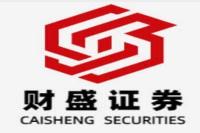智慧楼宇:巨头角逐下的万亿蓝海与生态挑战
元描述: 智慧楼宇市场规模持续增长,美的、海尔等国内巨头与江森自控、霍尼韦尔等国际巨头激烈竞争,但软件生态互联互通仍是行业痛点。本文深入剖析智慧楼宇市场现状、未来趋势及挑战,并提供专家见解。
Whoa! Hold onto your hats, folks! The world of smart buildings is exploding, and it's a race to the top! Forget the sleepy image of traditional buildings – we're talking about a multi-billion dollar industry fueled by cutting-edge technology and a seriously competitive playing field. From sleek skyscrapers to humble office blocks, the digital transformation is sweeping across the architecture landscape, and the stakes are higher than ever. This isn't just about fancy gadgets; it's about creating efficient, sustainable, and truly user-friendly spaces that optimize everything from energy consumption to occupant experience. We're diving deep into the heart of this exciting sector, exploring the key players, dissecting the challenges, and revealing the untold story of how smart buildings are shaping the future of urban living. This isn't your average industry report; it's a thrilling ride into the world of innovation, competition, and the promise of a smarter tomorrow. Get ready to unlock the secrets of the booming smart building market! We'll uncover the strategies of industry giants like Johnson Controls, Honeywell, and the rapidly expanding Chinese players such as Midea and Haier Smart Home. We'll delve into the technological advancements driving this growth and explore the hurdles that still need to be overcome. So buckle up—let's explore the fascinating world of smart buildings!
智慧楼宇市场规模及增长趋势
The global smart building automation market is a juggernaut, projected to hit a staggering $1040.5 billion in 2024 and keep on growing at a CAGR of 7.7% until 2029. That's not all, folks! The global building automation systems market is predicted to reach $1089.5 billion during the same period, boasting an astounding CAGR of 11.4%. These numbers paint a picture of explosive growth, and it's not just a global phenomenon. China, for instance, experienced massive growth in its smart building market in 2023, reaching a market size of 678.33 billion yuan (approximately $93 billion USD), split almost evenly between renovation and new construction investment. Experts predict that this market will surpass the trillion-yuan mark by 2026. This incredible expansion is attracting major players from across the globe, transforming the architectural landscape in an unprecedented way. The potential is mind-boggling!
This rapid growth is driven by several factors, including:
- Increased urbanization: More people are moving to cities, demanding more efficient and sustainable buildings.
- Technological advancements: Innovations in IoT, AI, and big data are making smarter buildings more feasible and cost-effective.
- Growing environmental concerns: The need for energy-efficient buildings is pushing the adoption of smart building technologies.
- Improved occupant experience: Smart buildings offer enhanced comfort, convenience, and safety for occupants.
A quick look at the market segmentation reveals a diverse landscape. The North American market, due to its advanced economy and technological prowess, holds a considerable chunk of the market share. However, the Asia-Pacific region, particularly China, is experiencing phenomenal growth, quickly closing the gap.
全球及中国智慧楼宇市场竞争格局
The smart building market is a battleground of titans. Global giants like Johnson Controls (JCI), Honeywell, Siemens, and Schneider Electric have long held sway. These established players bring decades of experience and a deep understanding of building automation systems. However, the rise of Chinese tech giants is shaking things up, with Midea and Haier Smart Home aggressively expanding their global footprints.
International Players: These established players maintain a strong presence, leveraging their well-established brand reputation and extensive global networks. Key strategies involve:
- Strategic partnerships: Collaborating with local companies to navigate regulatory complexities and adapt their offerings to local market needs.
- Technology innovation: Continuously developing innovative products and solutions to stay ahead of the competition.
- Focus on sustainability: Highlighting the environmental benefits of their products to attract environmentally conscious clients.
Domestic Players (China): Chinese companies are rapidly catching up, demonstrating a keen understanding of the local market’s unique challenges and opportunities. Their strategies include:
- Aggressive expansion: Investing heavily in research and development, as well as international expansion.
- Cost-effectiveness: Offering competitive pricing and tailored solutions for the Chinese market.
- Integration of existing ecosystems: Leveraging their existing expertise in home appliances and related technologies to create integrated smart building solutions.
| Company | Strategy | Strengths | Weaknesses |
|-----------------|---------------------------------------------|-------------------------------------------------|-----------------------------------------------|
| Johnson Controls | Global reach, strong brand, extensive portfolio | Established technology, global network | Adapting to local market nuances |
| Honeywell | Technological innovation, strong R&D | Advanced building automation systems | Price competitiveness in some segments |
| Midea | Cost-effective solutions, rapid expansion | Strong manufacturing capabilities, local knowledge | Brand recognition in international markets |
| Haier Smart Home | Integrated solutions, focus on IoT | Strong IoT ecosystem, smart home experience | Less established in commercial building solutions |
Beyond the traditional players, tech giants like Huawei and Tencent are entering the fray, leveraging their expertise in cloud computing and artificial intelligence to offer innovative software solutions.
美的与海尔:中国智慧楼宇巨头的崛起
Midea and Haier Smart Home represent the vanguard of China's push into the global smart buildings market. Their success is anchored in several key factors:
- Vertical Integration: Both companies leverage their expertise in manufacturing appliances and related technologies, giving them a significant advantage in providing integrated solutions. This reduces reliance on external suppliers, ensuring better cost control and quality management.
- Local Market Understanding: Their deep understanding of the Chinese market’s specific needs and preferences allows them to develop targeted solutions that resonate with local customers. This includes addressing unique regulatory requirements and cultural preferences.
- Rapid Innovation: Both are investing heavily in R&D, constantly pushing the boundaries of smart building technology. This is evident in their ongoing development of innovative products and solutions.
- Global Expansion: Both companies are actively pursuing international expansion, establishing a global presence and challenging the dominance of established international players.
Midea, for instance, has strategically divided its business into five key sectors—real estate, public utilities, infrastructure, and industrial and agricultural production—demonstrating a diversified approach. Their emphasis on heat pumps, screw chillers, and centrifugal chillers highlights their focus on energy-efficient solutions.
Haier, on the other hand, has successfully deployed its digital service centers (DSCs) globally, starting with Thailand and planning further expansion into Southeast Asia. Their focus on integrated solutions, encompassing building management systems and IoT connectivity, allows them to offer comprehensive solutions to clients.
智慧楼宇的核心技术与挑战
Smart buildings rely on the convergence of several key technologies:
- Internet of Things (IoT): Connecting various devices and systems within a building to collect and exchange data.
- Big Data Analytics: Analyzing massive datasets to gain insights into building performance and optimize operations.
- Cloud Computing: Providing scalable and reliable infrastructure for data storage and processing.
- Artificial Intelligence (AI): Enabling predictive maintenance, automated control, and personalized experiences.
- Digital Twin Technology: Creating a virtual representation of a building to simulate and optimize its performance.
Despite this technological prowess, significant challenges remain:
- Interoperability: Different systems and devices often use different protocols, hindering seamless integration. This leads to data silos and inefficiencies.
- Data Security: The vast amount of data collected in smart buildings poses significant security risks.
- High Initial Investment: The cost of implementing smart building technologies can be substantial, particularly for older buildings.
- Skill Gaps: A shortage of skilled professionals to design, install, and maintain smart building systems exists.
- Fragmentation of the Supply Chain: The lack of standardization necessitates integration efforts across various vendors and products.
The software ecosystem, in particular, remains a significant bottleneck. While many companies excel in hardware, integrating software effectively remains a challenge. This requires collaboration across different vendors and a focus on open standards to ensure seamless interoperability.
生态壁垒的突破与未来展望
Overcoming the challenges necessitates a collaborative approach. Breaking down the ecosystem barriers requires:
- Open Standards: Adopting open standards and protocols to enable seamless interoperability between different systems and devices.
- Industry Collaboration: Fostering collaboration between hardware and software vendors to develop integrated solutions.
- Investment in Training and Education: Developing training programs to address the skill gaps in the industry.
- Government Support: Policy support to promote the adoption of smart building technologies and to standardize integration efforts.
The future of smart buildings is bright. The convergence of IoT, AI, and big data will continue to drive innovation, offering opportunities for improved energy efficiency, reduced operational costs, and enhanced occupant experiences. However, addressing the challenges of interoperability, data security, and integration is crucial to realizing the full potential of this transformative technology.
常见问题解答 (FAQ)
Q1: What is a smart building?
A1: A smart building is a structure equipped with advanced technology systems that optimize its operations, enhance occupant comfort and safety, and improve energy efficiency. It leverages IoT, AI, and big data to manage various aspects of the building, from HVAC systems to security and lighting.
Q2: What are the benefits of smart buildings?
A2: Benefits include increased energy efficiency, reduced operational costs, enhanced occupant comfort and productivity, improved security, better space utilization, and data-driven decision-making.
Q3: What are the key technologies used in smart buildings?
A3: Key technologies include IoT, AI, big data analytics, cloud computing, and digital twin technology.
Q4: What are the challenges facing the smart building industry?
A4: Challenges include interoperability issues, data security concerns, high initial investment costs, skill gaps, and a fragmented supply chain.
Q5: How can the challenges facing the smart building industry be overcome?
A5: Solutions involve adopting open standards, fostering industry collaboration, investing in training and education, and seeking government support.
Q6: Who are the major players in the smart building market?
A6: Major players include Johnson Controls, Honeywell, Siemens, Schneider Electric, Midea, Haier Smart Home, and several prominent tech companies.
结论
The smart building market is poised for explosive growth, driven by technological advancements and increasing urbanization. While established international players maintain a strong presence, the rise of Chinese tech giants is significantly impacting the competitive landscape. Overcoming the challenges of interoperability and ecosystem integration will be key to unlocking the full potential of this dynamic sector. The future of smart buildings is a collaborative one, demanding a concerted effort from industry stakeholders, policymakers, and technology innovators. It's a future where technology seamlessly integrates with architecture to create truly intelligent and sustainable environments.



